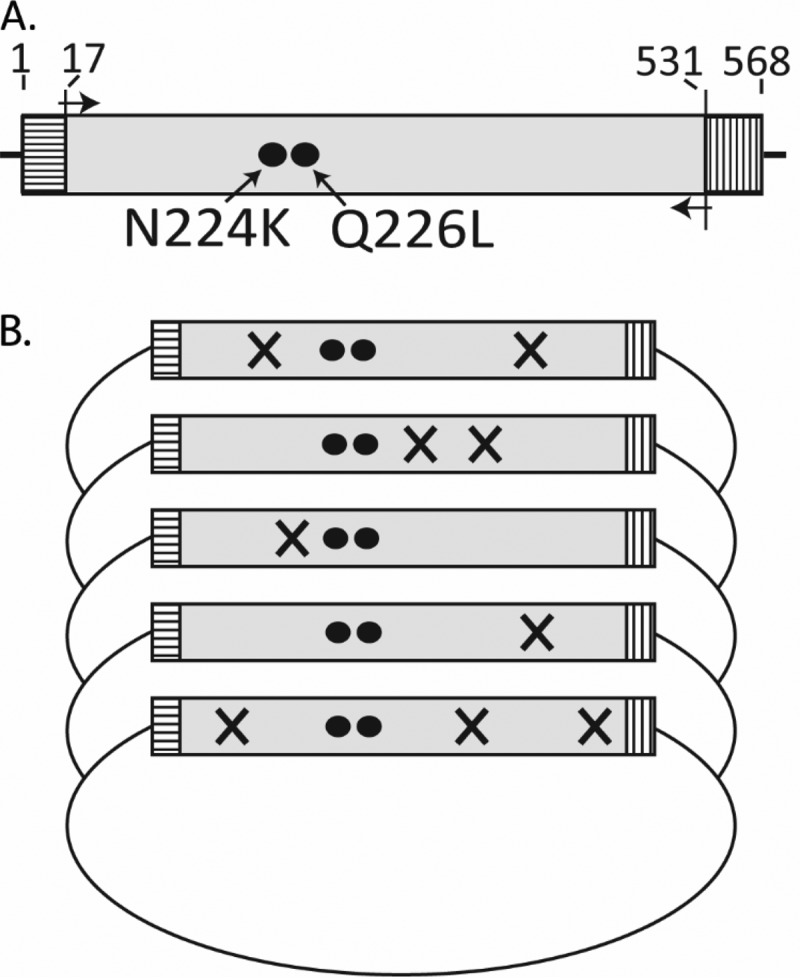FIG 1.

Generation of the mutant virus library. (A) The target area for mutagenesis (amino acids 17 to 531) is shown in gray; the sequences encoding the signal peptide (amino acids 1 to 16) and the transmembrane region and cytosolic tail (amino acids 532 to 568) are depicted by horizontal and vertical lines, respectively. The amino acid changes that confer binding to human-type receptors (N224K and Q226L) are depicted as black circles. (B) Schematic diagram showing the construction of the mutant plasmid library. The cDNA template encoding HA amino acids 17 to 531 was amplified by using error-prone PCR, resulting in random amino acid changes. The mutated PCR products were then used to replace the wild-type sequence in the plasmid vector; the resulting plasmid library was subsequently used to generate the mutant virus library.
